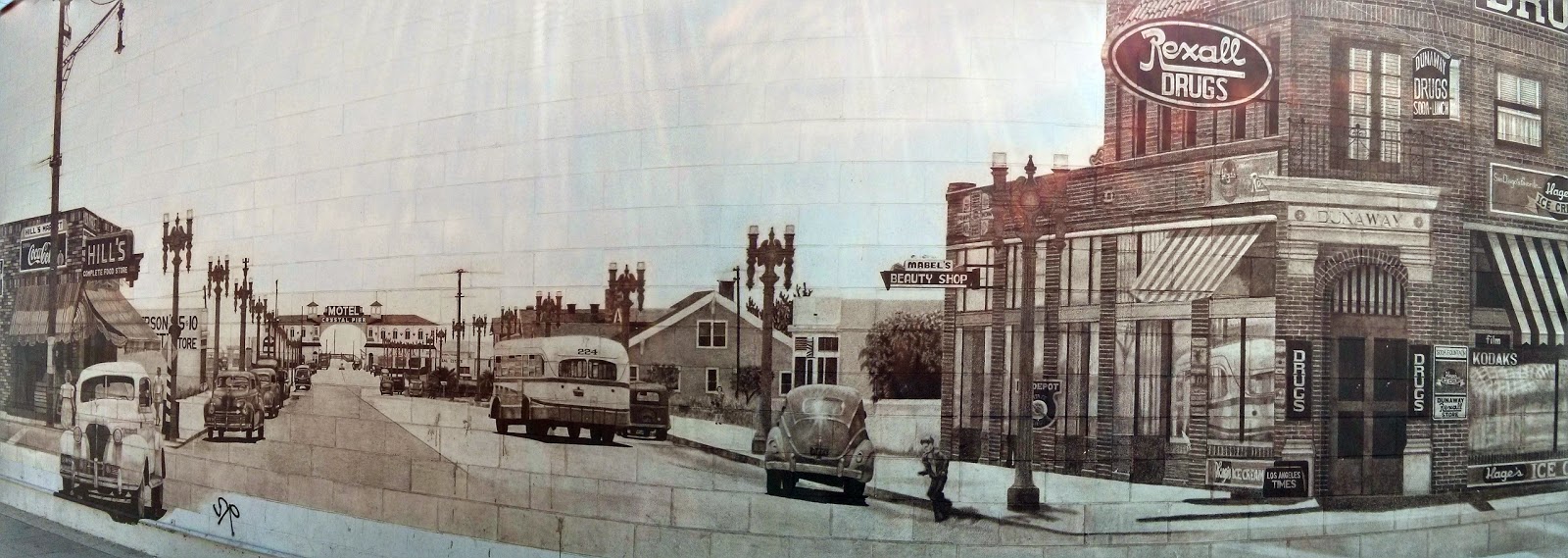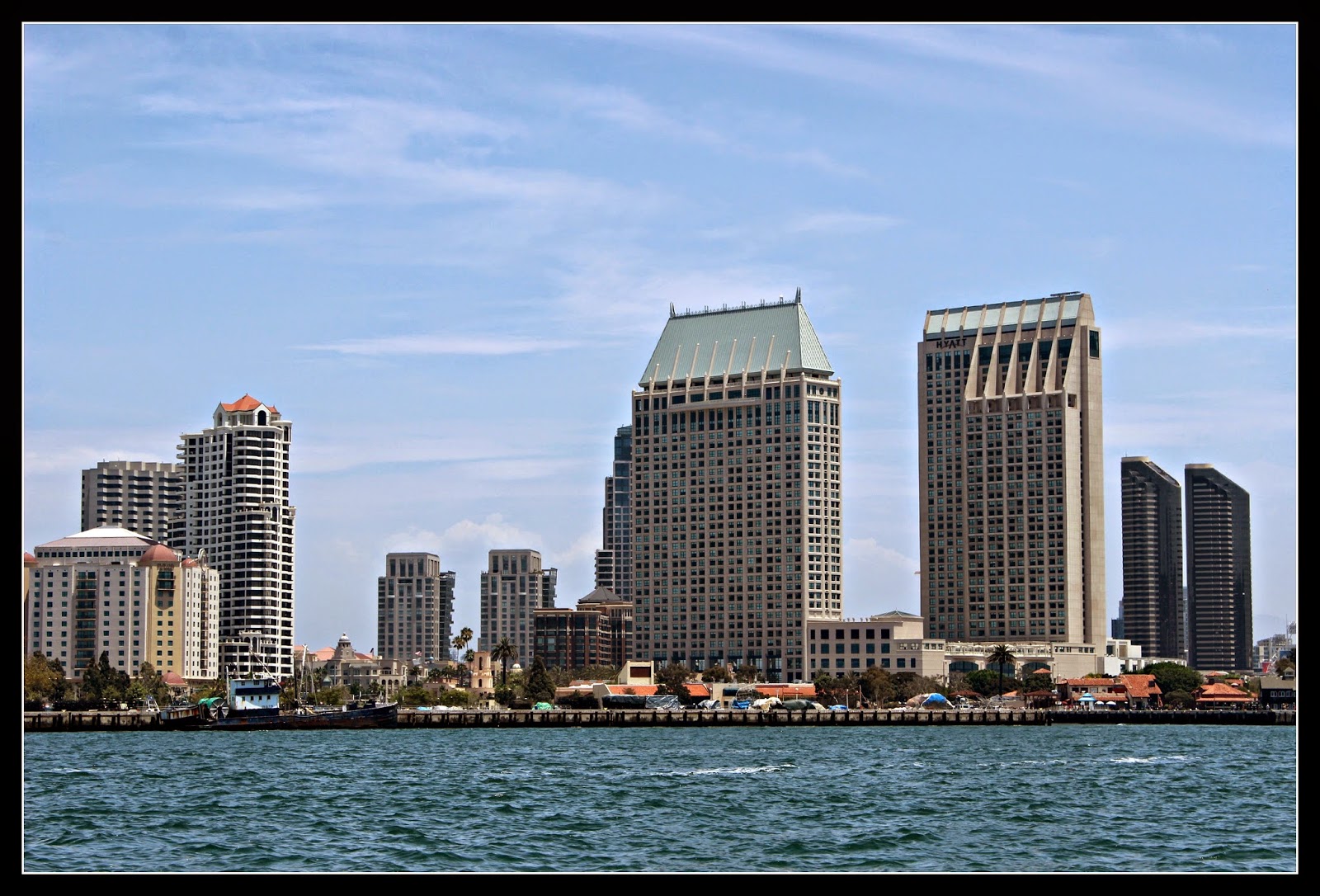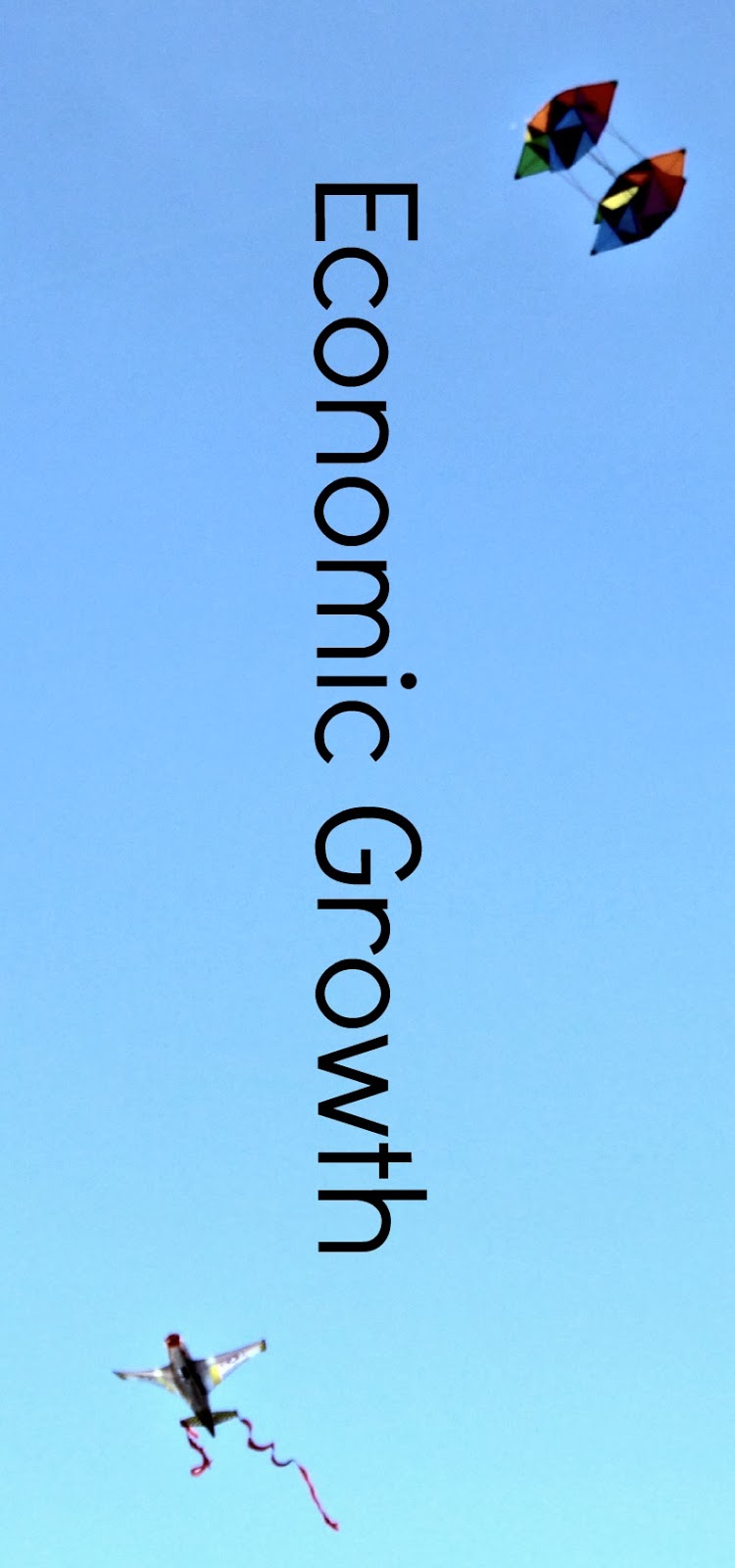The affordability of housing is a difficult issue for San Diego as the costs of housing and rent are reaching beyond what the average person can afford. The problem has become so exacerbated that one has to wonder if it will someday, if not already, have an impact on recruitment and retention by employers that limits future economic growth. The problem of San Diego's housing move beyond surface solutions and more into the fundamental design of the city. Rethinking that design may be helpful in creating a more sustainable future.
San Diego is designed like a suburb but has limited coastal space. Encouraging the development of apartment housing can be beneficial for building up and consolidating people into better managed areas. Instead of wasted space well designed housing can put people in smaller areas without jeopardizing their comfort.
Condos work the same way as apartments. Well designed facilities can not only save space for more housing but also offer opportunities to include fitness, pools, and aesthetically more pleasing grounds. Condos help support property ownership in the city turning renters into buyers who are likely to stay in the city longer
When designed properly apartments can easily convert into condos when neighborhood demographics change. Offering opportunities to switch housing from renter to owner when the market demands it provides the right kind of flexibility in neighborhood management. Having a mix helps create a sense of community where people can stay many years through the different stages of their life.
Empty commercial buildings offer opportunities to develop mini offices for a trendy new crowd of entrepreneurs. Sometimes old commercial buildings can be transformed into housing for urban hipsters. You can find examples of where this worked well in places like Milwaukee and Chicago. Instead of letting buildings run down find new uses for offices, recreation, and housing.
Creating better people management also helps save on San Diego's expensive infrastructure bill. More people in smaller areas means that transportation, roads, water, sewer, electricity, Internet and other infrastructure changes can apply economies of scale allowing for effective use of tax dollars. Getting more bang for government buck is half the battle.
San Diego has suffered its share of droughts, scorching weather, and water shortages. Properly designed apartments and condos can offer green solutions to electricity, water, and land management. Instead of spreading large amounts of concrete across massive ground space solutions such as natural rooftops, solar panels, water catches, and recycling provides new opportunities saving long-term problems.
Most people love to live in aesthetically beautiful places that offer park like atmospheres, fountains, green space, and social areas. Apartments and condos can offer something previous single-family housing could not. Within arms reach people can have all of the aesthetically pleasing amenities and daily services they need making complexes more appealing.
Cost is based on demand and supply. There is a shortage of housing that is jacking up the cost of living for people and this is limiting the opportunities of businesses to recruit and retain qualified candidates. Offering more housing at different price points helps to alleviate that problem for different demographics. Without new spaces the price will continue to limit San Diego's opportunities.
In city management there are no easy solutions and most will take years if not decades to effectively convert. However, by having a general plan of action helps to start making the right zoning, permit, infrastructure decisions that develop a more sustainable tomorrow. The trends in urbanization and its appeal among a new generation isn't likely to change soon and making better use of time and resources helps in alleviating the cost of housing and city management in the future.
The blog discusses current affairs and development of national economic and social health through unique idea generation. Consider the blog a type of thought experiment where ideas are generated to be pondered but should never be considered definitive as a final conclusion. It is just a pathway to understanding and one may equally reject as accept ideas as theoretical dribble. New perspectives, new opportunities, for a new generation. “The price of freedom is eternal vigilance.”—Thomas Jefferson
Showing posts with label infrastructure. Show all posts
Showing posts with label infrastructure. Show all posts
Monday, February 16, 2015
Sunday, August 3, 2014
Policy and Infrastructure Improves National Growth
The development of nations occurs on a constant
basis. The policies leaders put in place have a huge impact on the success of
any nation and can have long-lasting impacts. A paper by Carmignani &
Chowdhury (2010) discusses how specific and broad focus impacts growth. They
elaborate on four scenarios of development and the outcomes of each.
Positive
Growth and Decreasing Inequality: Occurs when there is
growth in the economy but greater mobility of the classes.
Positive
Growth and Increasing Inequality: Occurs when there is growth
in the economy but that growth impacts one class over another.
Negative
Growth and Decreasing Inequality: Occurs when growth is
negative but there is greater mobility among the classes.
Negative
Growth and Inequality: Occurs when growth is negative but
it impacts one class over another.
The authors found through their analysis that strong
policies and infrastructure improvements help create the right opportunities
for a positive growth and decreasing inequality situation. Countries are not
limited by their geographical locations, resources, or population. Any country
can improve their standing by having the right policies and infrastructure.
Policies have legal implications for businesses and
help create an environment for growth. The way in which companies structure,
operate and develop are based in part on how they work within particular environments.
Policies should focus on business and employment growth and ensure that the
environment allows for proper wealth distribution and class mobility.
Likewise, the infrastructure of a nation naturally
can impact the success of business within a particular environment. Proper
infrastructure will help ensure that products move quickly, information is
transferred appropriately, and money moves easily. Infrastructure encourages
growth from the foundations of an economy.
Carmignani, F. & Chowdhury, A. (2011). Four
scenarios of development and the role of economic policy. Journal of Developmental Studies, 47 (3).
Monday, February 10, 2014
Economies Fly High with the Kite Model
International competitiveness doesn’t exist in a vacuum.
There are many components such as the internal clusters, national methodology,
and the cultural grouping of countries to consider. A paper by Yu-Jen and
Hsiao-Fong helps to develop higher levels of understanding of how these factors
work together to raise the development properties of a nation (2012). Their
work focuses on combining the Flying Geese Theory and The Diamond Model to
develop a more holistic framework.
Flying
Geese Theory: The
theory was developed by Japanese economist Akamatsu Kaname to categorize
countries into leading nations, middle countries, and follower countries (1962).
Less advanced countries will attempt to move up in the V pattern but may fall
backwards based upon their abilities. The pattern is not set. Countries that
adapt new technologies, higher skilled labor, better structures, and greater
education will lead the flock.
The
Diamond Model: The
Diamond model was developed by Michael Porter (1990) to explain how countries
become more competitive. He looked at clusters and history of development. His
analysis took into account Factor Conditions, Demand Conditions,
Related/Supporting Industries, Firm Development, Government and Chance. The
factors work together to create a type of diamond pattern.
Both theories have their limitations and therefore
do not do well in isolation describing concepts of a country in an
international market. The Diamond Model can be seen as inner clustered workings
of a country while the Flying Geese Theory can be seen as a country working
within an international environment. Clusters help create the competitive
nature of the country and like geese they jockey with related countries for
position.
The Kite Model seeks to integrate the Diamond and
Flying Geese approaches into a more comprehensive framework. A country that
develops must compete with others within their group for more influence and
access to resources. The Kite Model has the following components:
Frame:
Support the kite through infrastructure and human capital.
Wings:
The balance of forces that include international ties and domestic endowments.
Tail:
The fundamental aspects of an economy that allow the economy to rise. This includes
government efficiency, law, regulation, political stability, capital formation,
investment, ideology, policies etc.
String:
The guiding force of government that encourages movement in a particular
direction.
The largest benefit of the Kite Model is that it
doesn’t leave a large gap in the analysis. Clusters, internal/external factors,
and the cultural groupings of countries do have an impact on overall success of
countries. These do not stand along and influence each other in varying ways. The
model is not meant to be a “save all” but does help decision-makers to
formalize the various economic components that lead to growth.
Kaname, A. (1962). Historical pattern of economic
growth in developing countries. The
Developing Economies, 1 (1).
Porter, E. (1990). The Competitive Advantage of Nations. Free Press: NY
Yu-Jen, C. & Hsiao-Fong, C. (2012). Kite model
for national development strategy. The
Journal of Contemporary Management Research, 6 (2).
Friday, January 31, 2014
The Economic Development of Platforms in History
It can sometimes be fun to think of where society is
heading. Perhaps it is more wishful thinking than concrete concept but there is often a little bit of
science behind projections. If we look at the trends of data development,
global warming, and global business trajectories we may find that pressures
will create impetus to redevelop the declining urban cores into something more
economically and ecologically sustainable. Decision-makers are seeking
opportunities to raise economic activity and lower costs while reducing
pollution. The next economic platform will be based in the varying pressures
of the environment in which it develops.
Economic platforms often mirror city planning through the
design and development of a city’s infrastructure. City planning is something
that has existed before the Roman Empire all the way back to Plato’s Republic.
Europe is full of cities that once started off of the Roman designs and
continued to develop beyond these platforms to create mazes of unique chaotic charm.
This is one reason why you can find narrow streets mixed with eclectic shopping
districts. The American system is newer and may be in the process of
transformation.
Each platform is related to the economic and social needs of
the people. In ancient history, early settlements focused on protecting individuals from nature’s
elements and predators. As people moved away
from simple hunting- gathering societies and into agrarian existence they
naturally sought marketplaces where they could sell their items and seek
protection from invading groups. Most cities were located in agricultural land,
near waterways, or nestled in easily protected areas.
Eventually cities moved beyond agriculture to include the
production of cottage industry goods and industrialization. It was these
cottage industries that grew into the mega-corporations of today. This required
expansion of slim roadways previously designed for horse and buggy to those that could
handle larger vehicles and goods. Airports, railways, industrial complexes, and skyscrapers became
part of the mainstream. Those who did not like the industrial core moved out to
the suburbs creating economic hubs around cities. The dirty and polluted urban
core was abandoned by those who had access to wealth.
The next development of economic platform is not so easily
defined and is open to considerable debate. There is greater opportunity to
develop the high data and eco-city that reduces its carbon footprint while
increasing the economic capacities of its habitants. Old skyscrapers will be
rejuvenated, new technology implemented, and suburbs will be drawn back into
the city through civic, resource and data connectivity. Sprawl will decline as
resources move inward back to their urban centers where strong infrastructure investment
can be pointed.
The eco-city will be designed as an economic hub that uses
existing rail and roads with new data systems to create higher connectivity
between various components. Wi-Fi, fiber optic cables, mini parks, creative
spaces, coffee shops and other improvements will match to larger industrial
sectors to interconnect economic activity and development. A good idea can come from anywhere and
businesses will capitalize on them.
As a nation, we were once worried about exploiting our
natural resources. We are now more concerned about competing on an
international market and will need to match creativity with practical
production to develop better products and services. This cannot happen unless
the infrastructure of a city encourages creative activity, proper social
relationships, and economic advancement. Such economic centers will connect to
other areas to draw in physical and virtual resources for development.
The Information Age is marked more by the rapid and proper
use of data streaming into the powerful hands of the individual user. Each
person will be more connected to the system and able to control their
education, time, economic opportunities, and development. Cities will be better
managed with higher levels of interactivity that allow people to work virtually
with much less energy. Economic strength will be enhanced through collective
effort.
These systems are based on the ability to provide the
platforms needed for economic and ecological growth. Today’s businesses are
more information oriented than in the past and use physical resources at a much
more efficient pace. Maximum development
will require the connection of the individual to worldwide economic activity
through small shop and large organizational pathways. The individual within the
larger economic structure will take precedence through greater development of
the virtual organization. Education and training will be on the top of the list
for human capacity development while greater balance between small and large
business will be sought to ensure pipelines of innovative ideas.
Subscribe to:
Posts (Atom)




